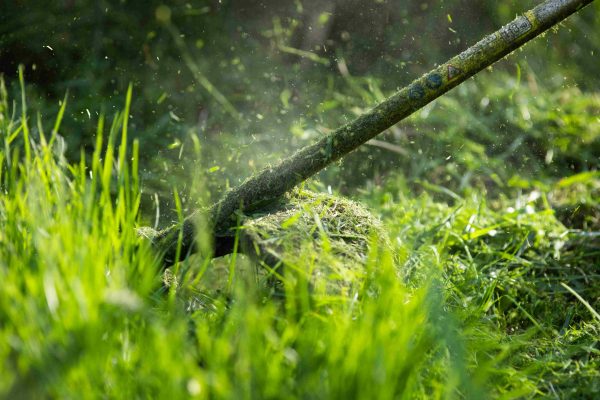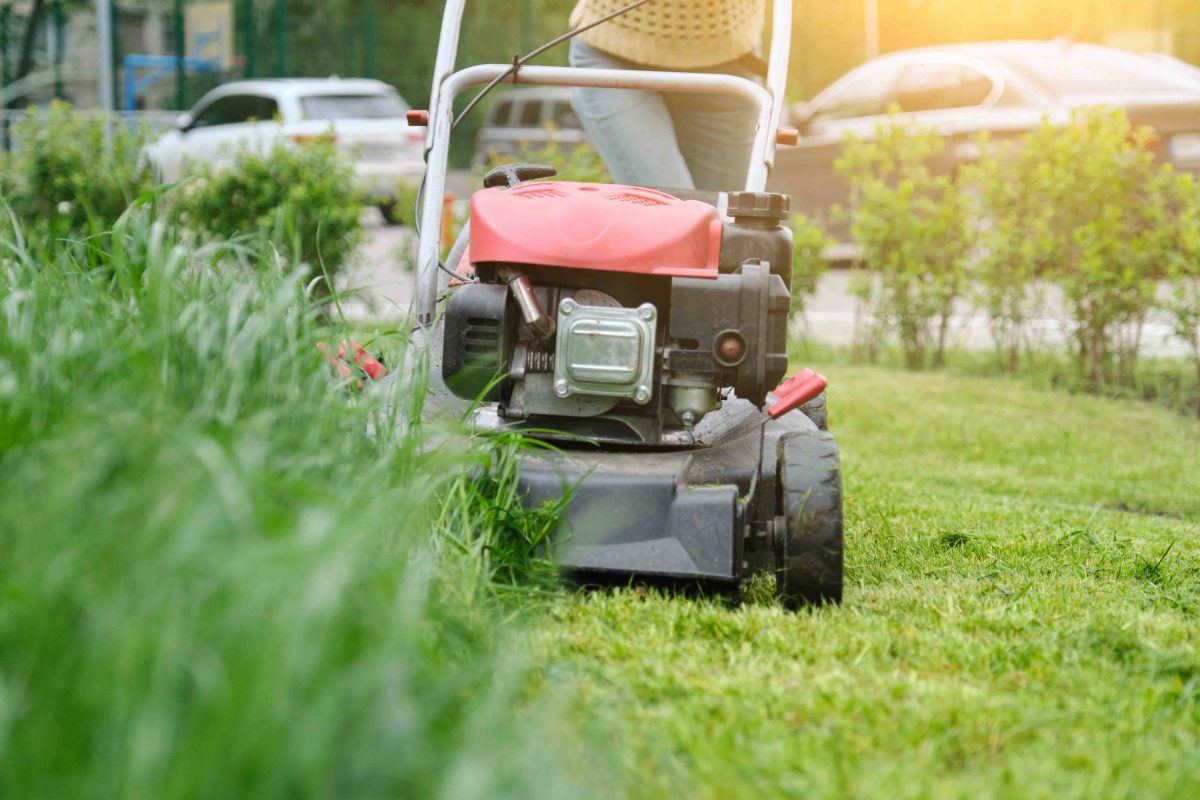When it comes to the question: “When to dethatching lawn?”, many gardeners are quite confused as they don’t know exactly what they need to do. Among many types of plants in your landscaping, the lawn is the hardest feature to take care of, requiring constant maintenance from early spring to early fall. You might not want to hear the sound of cutting or dethatching on your lawn. However, if your lawn doesn’t grow well despite being fed regularly, it must be a sign of a thick thatch or compacted soil.
Either it is, you need to take action immediately to help restore a lush, healthy lawn by allowing enough air, water, and nutrients to reach the grass roots. If a thick thatch is a problem, you need to remove this layer of dead materials accumulated at the base of the grass. Not all lawns need dethatching but when they do, you need to understand a little deeper with your best effort to keep its beauty for the following future.
See more: How to Water for a Healthy Lawn?
Go with Green Arbor Landscaping in this article, we’ll show you why, how, and when to dethatching a lawn for the best care.

What is Thatch Layer? – Bothell Landscaping
A thatch layer contains a mixture of living and dead grass roots, crowns, stems, and lower shoots which are formed between the soil surface and green lawns. It might sound gross, right? But a thin layer of thatch can be beneficial for the soil and grass roots since it acts like an insulator against temperature extremes and keeps the soil moisture to protect the grass structure from big fluctuations of weather.
But too much thatch is a real problem! Thatch buildup of more than 3/4 inches would become a barrier to block water, oxygen, and nutrients penetrate the soil to get through the root systems. Over time, thick thatch layers also retain a huge amount of water during rainy seasons, leading to grass roots suffocating due to lack of air. Also, a thick layer can contain insects, bugs, and disease, stifle the lawn’s growth, make grass plants weaker, and even die.

Warning: Grass can grow from thatch layer instead of soil. This means the plants would be vulnerable to drought, heat, and other stresses.
Common Causes of Thatch
According to the research of the Kentucky Cooperative Extension, there are many common reasons your lawn experience a thatch layer, including:
- Over or low soil pH level: Most microorganisms that are best for the decomposing process of decaying plants develop in the soil pH range from 6 – 8, indicating neutral. If the soil condition is not good for microorganisms to work best, the decayed part of grasses will accumulate under the soil and form a thatch layer.
- Excessive growth of grass: Your lawn includes some spreading species such as Kentucky bluegrass, Zoysiagrass, and creeping fescues which is the main reason to build up this layer. This is because the speed of the natural breakdown cannot catch up with the growth rate of these plant materials. Clump-forming grasses like tall fescue hardly cause the problem of thatch.
- Overfertilization: Nitrogen retained in fertilizer leads to excessive growth of plants and increases the acidity in the soil. Also, heavy pesticide contributes to this reason.
- Compacted soil without aerating: Everything, including grass roots, needs space to best grow. However, if you leave the soil compacted with a weak aeration system, it likely prevents the roots from reaching anything underground.
Maybe you’re interested in: Clumping Bamboo vs Running Bamboo
Signals to Look for When to Dethatching Lawn
If your lawn needs dethatching, it will experience these symptoms:
- Decrease hardiness: you will likely see the most changes in heat or cold weather
- Dry spots
- Insects problems and diseases are increased
- High humidity in soil because of the slow movement of water and air through the plants.
Dethatch & Aeration: What Is the Difference?
Many people get confused between these two terms because both of them are in the goal to improve the soil quality by giving enough nutrients plants need. In fact, dethatching and aeration are two different processes.
Aeration is actually the process in which the gardeners remove plugs of soil and turf to create a hole for nutrients and water to get deeper into the compacted soil. In this process, an aerator will be the main tool best remove these plugs. Whenever you notice your soil compacted, let’s do it at once.
>>> Related: Artificial Turfgrass – Is It Better?

Whereas, dethatching removes layers between the soil and natural grass accumulated organic debris. A little thatch layer will be good for lawns, and you only need to dethatch your lawn when this layer is more than 0.5-inches thick. The raking tool is alright for the dethatching process.

Although they are different terms, aeration and dethatching can work together to save your lawn. Aerating will help nutrients penetrate the thatch layer more easily so that it speeds up the breakdown of the thatch layer.
When to Dethatching Lawn
Dethatching is tough, so let’s do it when your lawn is at peak growing times and when the weather conditions are best for the lawn’s recovery (not too hot, too cold, too dry, or too wet). In general, from late summer to early fall is the best time to dethatch a lawn as the temperatures and rain penetration can help the lawn to recover.
>>> See more: Time to Have Lawn Care Tips
In particular, the ideal to dethatch your lawn depends on whether the type of grass you’ve already had is cool season grasses or warm season grasses. This is because each different type of grass has different growing patterns.
For cool season grasses such as Kentucky bluegrass, early spring, late summer, or early fall would be the best time for dethatching. For warm season grasses such as Bermudagrass, perennial ryegrass, or Zoysia grass, a thick thatch layer happens mostly in early summer, therefore, you should dethatch your lawn during this time because of their peak growth.


Tips: Avoid times when you start germinating new seeds because dethatching will bring these seed up to the surface.
How to Dethatch Your Lawn with the Right Tools
You should go with the moist soil when dethatching, but not soggy. Therefore, you’ll need to water the entire lawn twice a day before any physical steps. For an over-2-inch layer of thatch, you should contact West Seattle landscapers or some lawn services for this job because dethatching requires more than just a simple cut session.
If you want to dethatch DIY, here are some machines/tools with varying levels of intensity available in some rental companies:
Manual Thatching Rake
A manual dethatching rake is designated with curved blades and short tines. This tool is good for light thatch buildup in some small lawns. Thanks to its design, you can combine it in both digging and pulling up thatch when raking.

Power Rakes – When to Dethatching Lawn
For bigger lawns, a manual rake would consume much of your effort, so power rakes will work well in this case. Like a lawn mower, this electronic device contains rotating and rake-like tines which can stand intense raking.

Vertical Lawn Mower
If you have lawns with a thick layer of thatch that needs dethatching, a vertical mower should be used so often. As its name implies, vertical mowers contain vertical grass blades which help you slice down through the soil and pull thatch builds.

However, the prices to purchase vertical mowers are quite expensive due to their rarity. That’s why you’re often recommended to rent them for DIY projects rather than purchasing them.
What to Do After Dethatching
Whether you have DIY or professional dethatch your lawn, getting the lawn on track and taking action for the lawn care after dethatching is the need.
Once your lawn is dethatched, the first thing to do is to remove all of the debris and thatch left on the lawn. And then, consider seeding premium grass seed or new turfgrass and fertilizing it to improve the soil quality. Germinating new seeds can help fill those gaps where large big thatch used to be built before the chances of unwanted weeds.
Related to: Cleaning Debris Costs
To prevent thatch builds in the future, test soil pH so often and follow recommendations for keeping soil balanced every 3 years. Maybe your soil will need lime to balance the previous acidity and contain thatch-reducing microorganisms to encourage beneficial species. Within a month, you will get good results.
Also, you’ll need to aerate the lawn immediately to provide enough space and air for plants. Depending on the grass types and traffic volume, turf lawn needs aerating annually with a core aerator.
Tips: Follow soil test recommendations to provide enough, not over, fertilizer. Otherwise, the soil will exceed nitrogen, leading to damaged root growth.
DIY or Call Professional Lawn Service – Renton Landscaping
With thinner thatch layers, you probably can do it yourself with these tools and tips we’ve already recommended. However, for a thicker layer of thatch, doing alone would be challenging and you might need some help from a local professional service company.
To have more consultation about garden service, contact Green Arbor Landscaping for more details:
- Phone: (206) 279-1450
- Email: info@greenarborlandscaping.com
- Website: https://www.greenarborlandscaping.com/

